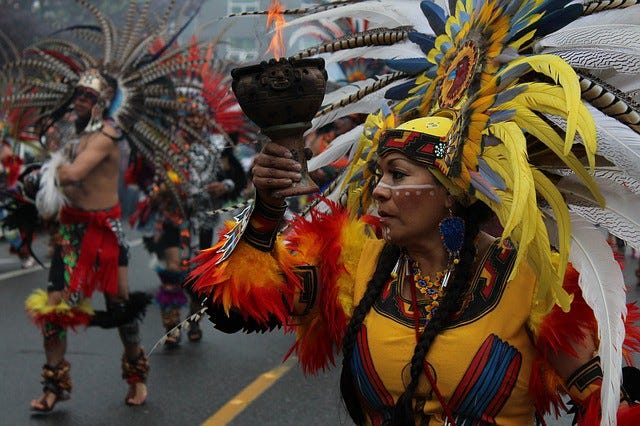From childhood to adulthood: Simplest way to stop cultural appropriation
When imitation is more offensive than flattering

My three favorite holidays are in this order: Veteran’s Day, Halloween, then Christmas. Veteran’s Day is both a federal holiday and an obvious favorite to those who know me: It’s my birthday. But Halloween makes me almost as happy. Although I have zip zero interest in “The Conners” and Roseanne Barr spoiled my enthusiasm for binge-watching the original version, the Conners are the only way to visualize how I decorate on October 31. And I’m never ever showing up to a Halloween party in “regular” clothes.
ADVERTISEMENT ~ Amazon
As an Amazon affiliate, I earn a percentage from purchases with my referral links. I know some consumers are choosing to boycott Amazon for its DEI removal. However, after thinking about this thoroughly, I want to continue promoting cool products from small businesses, women-owned businesses and (specifically) Black-owned businesses who still feature their items on Amazon. As of the first date of Black History Month 2025, each new post will ALWAYS include a MINIMUM of one product sold by a Black-owned business. (I have visited the seller’s official site to verify that Amazon Black-owned logo.) I am (slowly) doing this with older, popular posts too. If you still choose to boycott, I 100% respect that decision.
But after writing this post on cultural appropriation in marketing, I saw a predictable amount of people proclaiming there is no such thing as “cultural appropriation” and stating “imitation is the greatest form of flattery.” I can tell you with absolute certainty that it is not. One particular Halloween costume I wore proved that for me, and I had to learn that lesson in an unexpected way.
ADVERTISEMENT ~ Amazon
As an Amazon affiliate, I earn a percentage from each product purchased using my referral link. The Kindle is FREE though!

Out of countless costumes I wore for Halloween, one of my favorites had been my “Indian” costume. I had the moccasins, the feathers, the headdress and even clapped my hand over my mouth — straight up stereotypical. I was also a pre-teen who had zero experience with Native Americans. The likelihood of me sitting next to a Native American family in a restaurant or seeing them in any neighborhood mall around me was next to none, regardless of Chicago being the third largest city in the United States. In my mind, this costume was cool and “flattering.” My parents were just letting a kid be a kid. I can’t blame them for what they also viewed as a harmless costume at the time.




